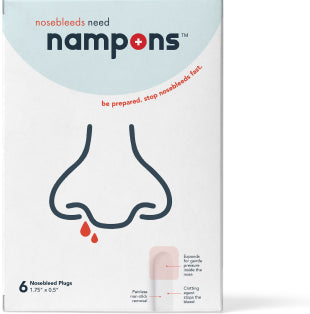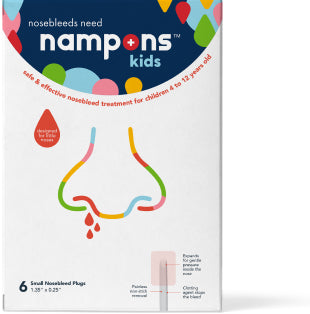Michael DiLeo, MD, is a retired obstetrician and published medical author with over 35 years’ experience in clinical and academic medicine. Author, inventor, and educator, he is now writing full time from his home in Massachusetts.
Most people do not spend a lot of time thinking about their noses. Certainly, if you’re pregnant, that isn’t the anatomy you tend to focus on. Yet, pregnancy is a very complex and miraculous condition involving every part of your body, from your thyroid gland to your pancreas, blood vessels to your heart, and so on—literally and anatomically from head to toe.
With pregnancy, there are biological changes everywhere, and your nose is no exception. This can be concerning when the pregnancy changes in your nose result in a nosebleed. Usually insignificant, such events can range from a mere inconvenience to life-threatening blood loss.
PREGNANCY ADAPTATIONS
One of the reasons human beings have survived and thrived as a species is the female body’s accommodating the state of pregnancy. Physiologic adjustments are automatically made and the metabolism shifts to compensate for the burdens of carrying a whole new person!
There are many changes; however, that warrant your consideration.
Hormonally, estrogen rises in pregnancy to many multiples of what it is when non-pregnant. Estrogen has over 200 different functions in the body, but one of them is to cause blood vessels to expand and multiply for the increased circulation needed in pregnancy. True, this primarily benefits your uterus (womb) and its blood supply to the placenta that nourishes your growing baby; but estrogen doesn’t discriminate—all tissues supplied by blood and oxygen are affected. For example, you may notice that everything seems to get a growth boost from this increase in blood flow—even that little skin tag or that mole.
Progesterone tends to relax smooth muscle, which helps divert blood to other parts of your body, including your nose.
Many other hormones, including insulin, thyroid, and others, impact blood vessels and actual blood elements, e.g., your blood clotting.
CRANIAL NERVE INPUT OF SMELL AND TASTE
It’s true: everything tastes and smells different when you are pregnant. Many researchers have suggested this is an adaptation in our evolution to avoid things not good for the baby or the expectant mother. You have probably craved things you typically don’t when not pregnant and run from things you previously enjoyed. This is because the change in blood supply and growth spurt of the nose’s (olfactory) receptors and even your taste buds alter how you perceive such odors or tastes.
The whole process involves the combined sensations delivered to the first (olfactory) cranial nerve and to the ones supplying the tongue (cranial nerves 7, 9, and 10 for the front and the back of the tongue, respectively). From these cranial nerves, especially the olfactory one from your nose, there is a very direct path to that part of the brain involved in memory and emotion, called the limbic system.
This all results in the senses of taste and smell being very human. (Does the smell of chlorine beckon you back to your childhood days of swimming lessons?)
The smell-memory/emotion connection is powerful and instantaneous, and it’s all because of the changes to the blood supply. That change is the increase of vascular tissue. However, this tissue is very fragile and easily damaged, resulting in nosebleeds. In fact, most pregnant women who experience nosebleeds do not remember any precipitating event to the nose to explain it.
Regardless, as the quaint medical saying goes, “All bleeding must stop.” Blood is meant to be contained, not lost. When a nosebleed becomes alarming, the all-bleeding-must-stop adage becomes a mandate. Of course, that’s intuitive.
THE POINT
The point of all this extra blood supply and the other changes is to not only pull off pregnancy successfully but to survive it. Delivering a child is an event centered around blood and blood supply. And all must return to normal after delivery so blood loss isn’t excessive. This involves changes in the flow of blood, the tensile strength of blood vessel walls, the extra amount of blood and plasma made before delivery, the ability to clot, the contraction of uterine (the womb) muscles to press together on bleeding veins and arteries, and many other phenomena. Unfortunately, before delivery, the compensating changes for after delivery aren’t yet in action.
NOSEBLEEDS AND PREGNANCY
The reality is that nosebleeds happen. For this, remedies such as lying down with one’s head back or pinching the nose have become initial approaches. Yet, these simple maneuvers do not hint at the seriousness involved for when they fail.
Can a nosebleed be that serious? The short answer is yes. How do you counter a process of fragile tissue that bleeds easily?
STOPPING NOSEBLEEDS—HOW HARD CAN IT BE?
It can be as hard as the length of time the nosebleed continues. Yet, we can take advantage of some of the very changes that make nosebleeds happen. The extra buildup of nasal tissue can be compressed—what is inefficiently done with external nose-pinching. That is, it can be done from the inside, pressing those tissues against each other, gently.
Nampons™ are a proprietary product designed specifically to do this. As it absorbs the blood, it expands with more pressure against the tissue. The micro-oxidized cellulose that makes contact with the bleeding tissues functions as a hypoallergenic clotting agent traditionally used by doctors and hospitals for generations. It attracts your normal physiologic proteins that promote the normal clotting sequence. Thus, mechanical and therapeutic strategies are used internally to address serious nosebleeds.
Is this merely a tampon? No, because a tampon only absorbs blood for the purpose of hygienically disposing of it; it is not therapeutic.
CONCLUSION
If you’re pregnant, the things that make your pregnancy successful can conspire to bleed your nose. But the problem is inside the nose, so it must be addressed inside. Using a mechanical pressure strategy with material that enhances clotting has proven to be the best approach. It requires no special training, is immediately effective, and limits otherwise serious nosebleeds to mere “inconveniences.”



